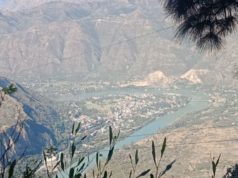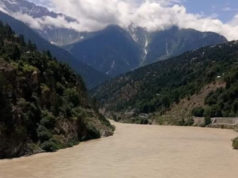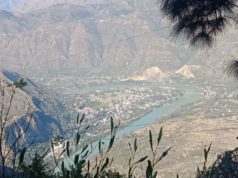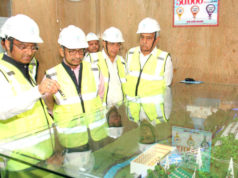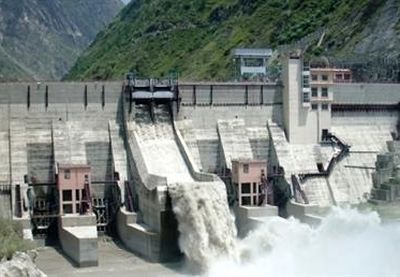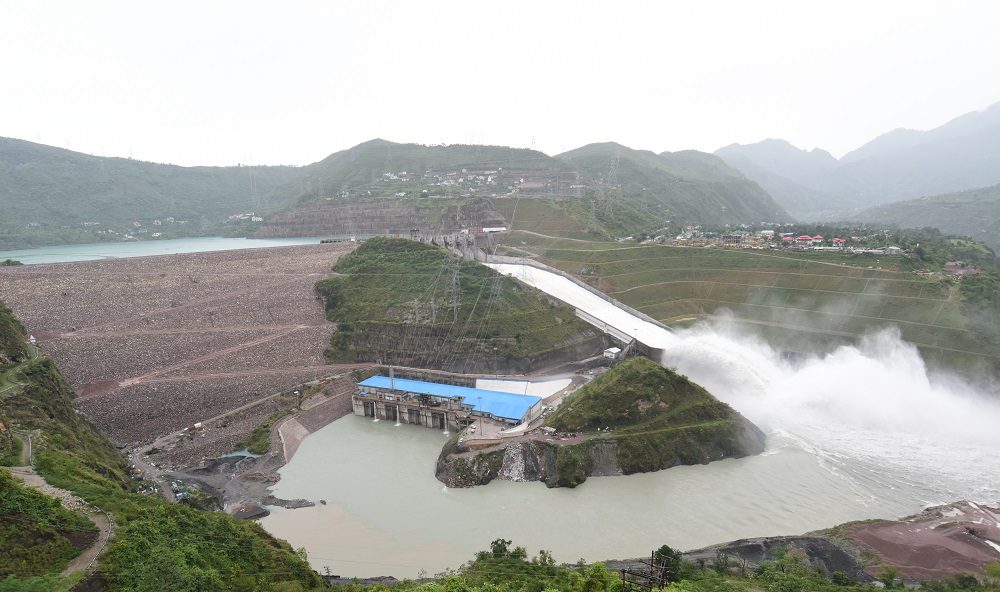
Bilaspur: The 800 MW Koldam Hydro Power Station of NTPC Limited achieved a generation of 2635.76 million units against the design energy of 2506.77 million unit during the first two quarters of the current financial year.
Sanjeev Kishore, Group General Manager of the power station, revealed the generation for the period April-September is also higher than the design energy for the period. The record generation, he told was the result of relentless efforts of team koldam as well as optimum and efficient operations of the machines. The hydro power station which commenced commercial operations on 18th July, 2015, had already stabilised and has also established new benchmarks of power generation during the months of July and August 2016 with a Plant Load Factor (PLF) of 107 percent, Kishore told.
The 800 MW Koldam Hydro Power Station is a unique plant in the country being operated as a run of river scheme with pondage and hence is neither a storage water scheme nor fully a run of river scheme, the Plant head informed. It is located upstream of Bhakra Hydro Power Station which is a storage water plant with a huge reservoir and high dam, he told.
Talking about the optimum operational efficiency achieved by the plant, he explained that the Koldam hydro power station had four generating units each of 200 MW capacity totalling 800 MW which are designed to generate 3054 million units of energy annually. With the ongoing records of generation, the plant was heading to surpass the targets of generation he told.
Since the operations of the plant were subject to availability of water in the river Satluj, the plant generates about 70 percent of the design energy in five months between April to August and 30 percent during the remaining seven months of the year, Sanjeev Kishore informed. During the lean flow period, the generation is mostly done to meet peaking requirement of the grid.
12 percent of the electricity generated, Sanjeev informed, was being supplied to the home state Himachal Pradesh free of cost while 1 percent more power was being supplied to the state on account of Local Area Development fund. All the Project Affected Families, he added, were also being provided 100 units of electricity every month free of cost which accounts for 0.62 percent of the total generation. Thus a total 13.62 percent of electricity generated from the plant was being supplied free of cost to Himachal Pradesh, he told. The remaining power he informed was being supplied to other beneficiaries namely Delhi, Haryana, Punjab, Rajasthan, Uttar Pradesh, Himachal Pradesh, J & K, and Chandigarh. The unallocated power also, he informed, was being supplied to Himachal Pradesh in addition to its quota of free power making it the largest beneficiary of the power station.
During the very first financial year of its commencing commercial operations, with effect from 18th July, 2015, the plant had surpassed the design energy target of 1706 million units by generating 1794 million units told Sanjeev Kishore. Cumulatively the power plant, he added, had already generated 4419 million units of electricity in a matter of a little over 14 months of commercial operations.
Talking about the generating capacity of the units, Sanjeev Kishore explained that each of the four 200 MW machines was designed to generate 4.8 million units in a day while a record generation of 20.86 million units @ 5.2 million units per machine, had been achieved on 17th June, 2016. However during the lean flow period, he informed, the generation gets reduced to as low as 1.36 million units per machine.
The Koldam has a live storage capacity of 90mcm (90 million cubic meter) in the 42 km long reservoir spread in 13.2 sq. kms of area between Koldam to Sunni, the plant head told. The entire project, he clarified was spread in Mandi, Bilaspur, Shimla and Solan districts. This live storage capacity of the Dam, he informed was capable to run all the four units of the plant for a period of only 32 hours at full capacity. Since power house of the plant is located just at the toe end of the dam, a net head of only 131.2 m was available thus requiring 161 cumecs of water flow for each machine, Sanjeev told. The requirement of water for operating all the machines was thus more in comparison to the high head power stations located upstream on river Satluj.
The Koldam Hydro Power Staion was the first venture of NTPC Limited, a Central PSU primarily engaged in thermal power generation in the country. NTPC, with a number of power plants all over the country he informed, had an installed capacity of over 47,226 MW and generated 886 million units of energy per day thus making it the largest generating company in the country.


